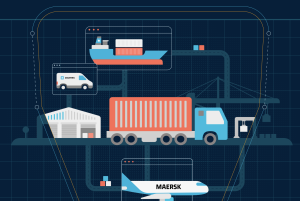By Kelly Barner, Owner and Editor, Buyers Meeting Point
Supply chain disruption was a popular topic long before the world was seized by the coronavirus pandemic. Geopolitical disturbances, natural disasters, labour strikes and changing regulations were already factors, and anyone that has been in supply chain during the last decade has seen all of these play out.
At this point, the phrase ‘supply chain disruption’ seems as natural as ‘supply chain’ must have seemed the first time people put these two words together. It would be easy to assume that all supply chains have been disrupted, especially given the breathless news coverage and layman consumer’s perception that toilet paper and meat are impossible to purchase. While most supply chains have been affected by today’s fluid, unpredictable conditions, few have stopped altogether.
What do we mean when we say disruption?
Modern supply chains are high-performing, finely-tuned machines. Lean or just-in-time practices have been commonplace for years, and productivity and efficiency improvements have been impressive. The flip side of the coin, however, is that a global supply chain’s tolerance for static and friction is very low.
The word ‘chain’ evokes images of metal links locked together, but this analogy has not been apt for a long time. Terms such as ‘network’, ‘ecosystem’ and ‘web’ are far more appropriate. While it takes a pair of bolt cutters to get through a steel chain, a stiff breeze can destroy a spider web in an instant.
As a result of supply chain fragility, even the loss of transparency can have a disruptive effect. Unsure when a delivery will arrive? Disruption! Unsure about how much stock is on hand at the warehouse? Disruption! Finding it difficult to project demand without typical seasonal and consumer patterns? You guessed it…disruption!
Supply chain managers are working on a continuum that extends from steel to spider web. On the one end is a set of nearly unbreakable links and on the other is a silky thread. Steel is expensive and lacks agility and, while thread is flexible, it can be destroyed in an instant. As we start to recover from the COVID-19 pandemic and resulting business restrictions, the challenge will be finding the sweet spot between silk and steel.
The process of discernment starts with the truth about our current status. While some supply chains have faced serious issues and high-visibility bankruptcies are starting to hit the news, the level of disruption may have been over-hyped. For instance, according to a recent survey run by Packaging World, 53% of consumer packaged goods (CPG) supply chains have not been disrupted thus far. The issues that have occurred resulted from increased lead times and difficulty sourcing ingredients.
If we over-exaggerate the disruption threat, we will opt for a spot on the continuum that is too close to steel, resulting in costly and staid product offerings. But we also cannot go back to business as usual, ignoring the risks associated with international dependence, poor data visibility and low inventory resiliency.
Each supply chain management team will need to make highly contextualised decisions of their own, rooted in fact and experience. Professionals in the automotive or consumer electronics supply chains should not make decisions on generalised information or the results from the CPG industry research referenced above – although they can find inspiration and potential solutions everywhere.
To increase the level of precision with which your company finds its target on the silk-to-steel continuum:
– Define disruption carefully and be as specific as possible when communicating internally and with suppliers. What exactly do you mean when you say disruption: delay, switching sources of supply, increased input costs or operational interruption?
– Calculate and track the costs (in both time and cash outlay) associated with each specific disruption that the company experiences. Use those values to calibrate the scale of your response.
– Make an effort to track non-disruptions as well as invasive disruptions. Which suppliers, supply chains and sources remain intact or outperform expectations?
Any company can go full silk or all steel, but neither choice will lead to sustainable success. Only a precise understanding of relevant disruptions, an appetite for risk and supply chain capabilities will allow leadership teams to recalibrate and rebuild in the shadow of the pandemic.
Kelly Barner is the Owner and Editor of Buyers Meeting Point. She has a unique perspective on procurement from her experience on both sides of the negotiation desk. She has led projects involving members of procurement, supplier and purchasing teams. Kelly has practical skills in strategic sourcing programme design and management, opportunity assessment, knowledge management, and custom taxonomy design and implementation.


























